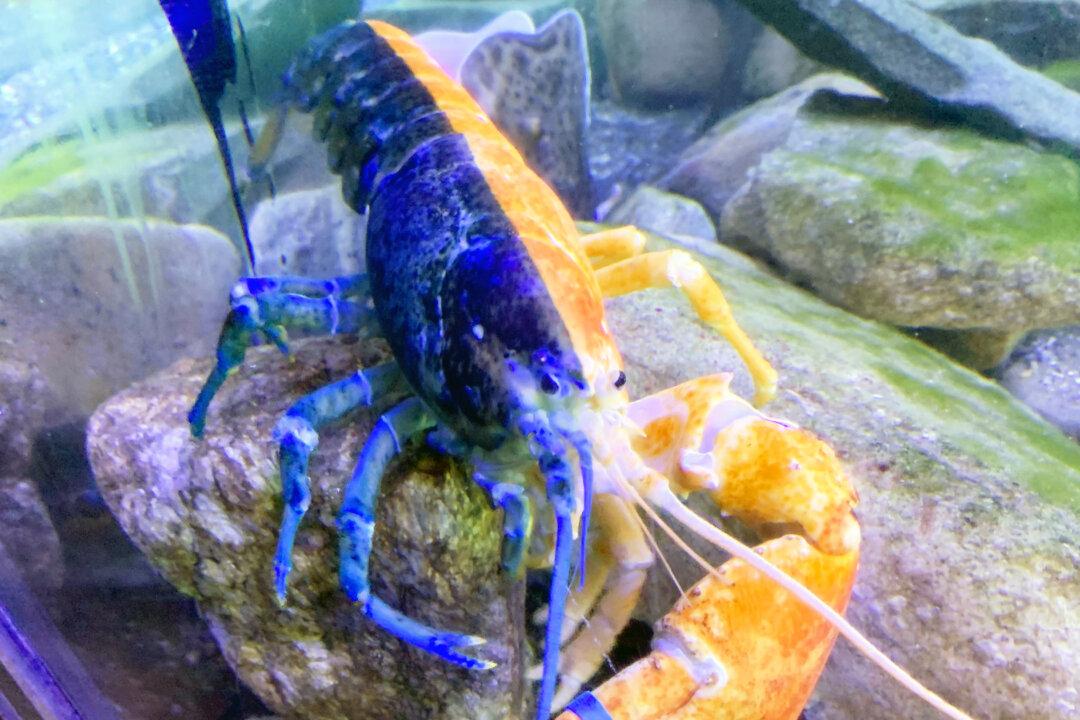The Seacoast Science Center in New Hampshire acquired an ultra-rare blue-and-orange lobster believed to be a 1-in-50-million specimen. Just weeks ago, it was put on display in its new tank for slack-jawed visitors to wow over.
The crustacean’s strange coloration likely results from a genetic mutation at a very early stage in its development when cellular split forms its left and right sides of its body. One side is blue and the other orange, split symmetrically down its length in a near-perfect straight line.






